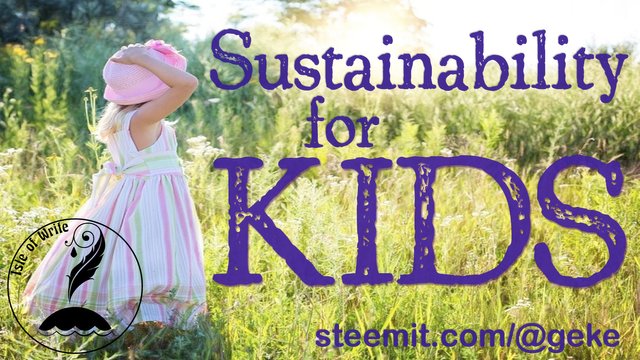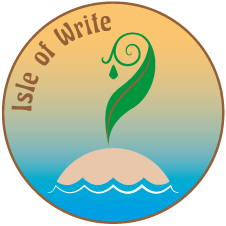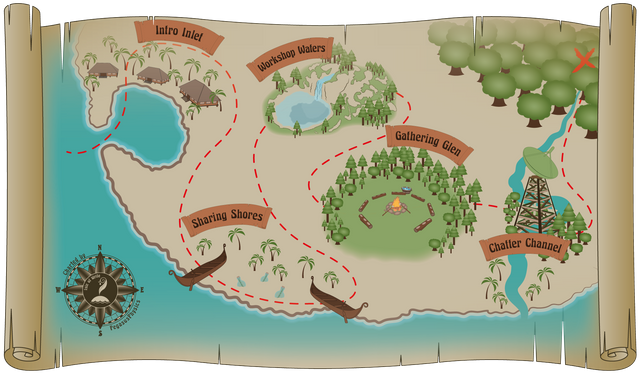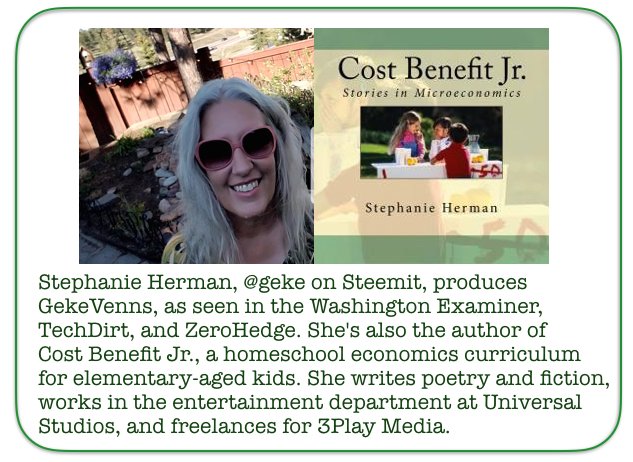Sustainability for Kids: recap

Part 1 | Part 2 | Part 3 | Part 4 | Part 5 | Part 6 | Part 7 | Part 8 | Part 9 | Part 10 | Part 11 | Part 12 | Part 13 | Part 14 | Part 15 | Part 16 | Part 17 | Part 18 | Part 19 | Part 20 | Part 21 | Part 22 | Part 23 | Part 24 | Part 25 | Part 26 | Part 27 | Part 28 | Part 29

We did it! This is the final post in my #challenge30days series on sustainability for kids! Hopefully it didn't get too technical or too boring. It's been a lot of fun to research and post on this topic, and it's one I've always wanted to write. Based on the information I've discovered about sustainability and blockchain governance, I'm planning to segue off this series into a new one: Blockchain Technology for Kids! I'll be starting that up in a day or two.
Meanwhile, I'd like to thank @dragosroua for hosting the #challenge30days writing and posting incentive and recap what we've learned here over the last 30 days.

First, we covered how Freud and his nephew Bernays figured out how to psychologically manipulate the masses into “buying” both political propaganda and material goods. From there, we saw how John Maynard Keynes became the first pro-consumption economic advisor to a sitting president, Franklin Delano Roosevelt. We also learned how many New Deal policies and programs were Keynesian in nature and led to modern-day problems like factory farms and the military-industrial complex. The result of these policies was an emerging pattern of unsustainable consumerism and overconsumption.
Next we looked at why all this shopping this wasn't a result of pure capitalism, which is based on “capital” – the conversion of savings (not consumption) into useful resources. And we learned that we probably should have called capitalism “savingism” instead so people would better understand how it works.

We saw that it was actually government intervention in the economy that led to our unsustainable levels of consumption. And we also saw that the government was intervening primarily to help out the corporations that were embedded in government agencies – a system called corporatism.
About half-way through the series, we learned that wealth is generated through saving and how sustainable practices like voluntary simplicity can help us become more financially stable while protecting the environment at the same time.
Then we began looking at the importance of decentralization in our efforts to make sustainable public choices and avoid the high costs of coordination that central planning incurs. And we saw how computer models exploring decentralized complexity have offered proof of Adam Smith's economic idea from the late 1700s that we refer to as the “invisible hand.”
Finally, we faced the unsustainable levels of electricity that bitcoin mining was consuming and explored how proof-of-stake systems were much more environmentally friendly and consumed less energy.

We also saw that the blockchain, and specifically smart contracts, could actually help us solve many sustainability issues. We learned that the blockchain ledger can prevent the type of corruption that happens when government tries to solve the same problems. And that smart contracts can help us prove ownership, trace consumption of resources, and give us a great economic incentive to start seeing a healthy environment as a form of capital.
I hope you'll join me in the next series, where we'll be exploring more about blockchain technology!

Think you'd like to wash up on our shore?
The treasure map will bring you right to our door!

cover art created with a pixabay.com image ]

Congratulations on completing the challenge AND on creating something beautiful and worthwhile in the process! I think it is marvelous that you are starting exactly where we need to make changes to the world: With the children.
One of these days we will hopefully learn what it means to be grateful simply to have "enough," rather than always questing to have MORE, no matter how much we already have.
Bright Blessings to you!
Thank you! Whew! It was hard to follow that thread for 30 days in a row, but it led me to some places I wasn't expecting and I'm so glad I did it!
I came across your last article and found a lot of ideas on how blockchain technology can be used to protect the environment - a great read and thank you for that - and I'm going back to read the other articles.
I would like to learn more about blockchain technology - I'm exceedingly IT challenged - so I'm definitely following.
Wow congrats @geke!
good to share.
thank you
Congratulations @geke! You have completed some achievement on Steemit and have been rewarded with new badge(s) :
Click on any badge to view your own Board of Honor on SteemitBoard.
For more information about SteemitBoard, click here
If you no longer want to receive notifications, reply to this comment with the word
STOPlots of perseverance to finish the challenge @geke! well done to you! should be proud of yourself! :) for me it is hard to keep on the challenges. somehow i end up going with the flow and forget the committed past! :)
congratulations!